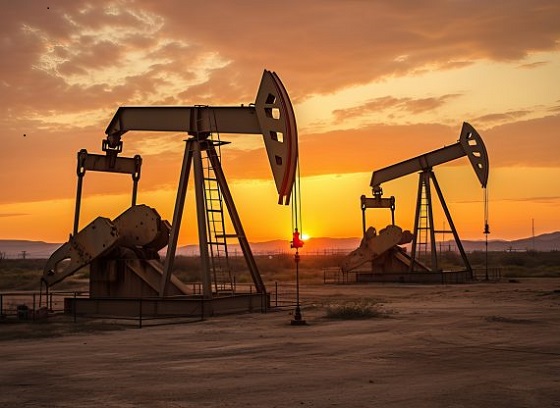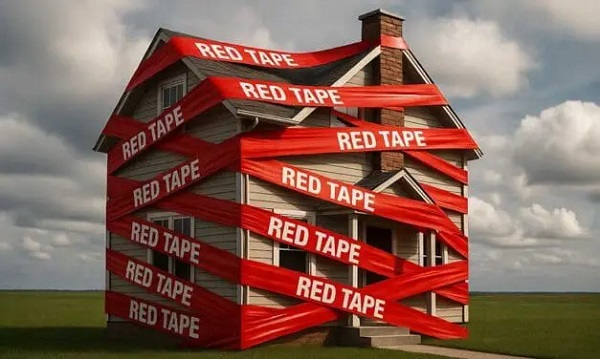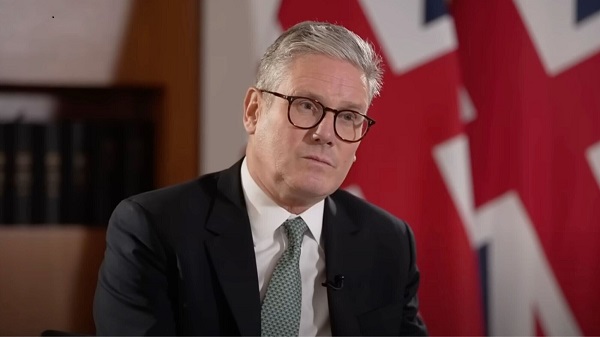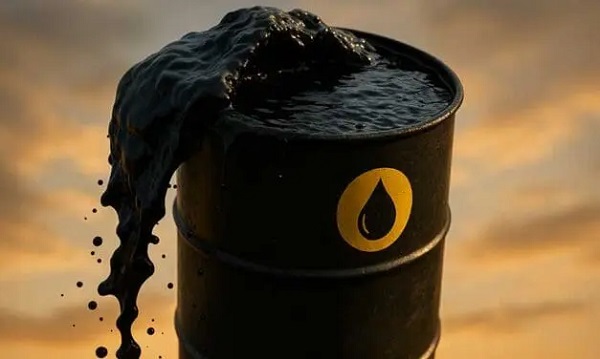Energy
A carbon tax by any other name

From Canadians for Affordable Energy
Written By Dan McTeague
It turns out that the story circulating last week from The Toronto Star that the Liberals were considering a “rebranding” of their Carbon Taxation program was true. On Wednesday the Liberals announced that the previously known “Climate Action Incentive Payment,” will now be referred to as the “Canada Carbon Rebate.” This was done “in an attempt to tackle what it calls confusion and misconceptions about the scheme.”
According to Liberal Minister Seamus O’Regan “If we can speak the language that people speak, because people say the words ‘carbon,’ they say the words, ‘rebate,’ right? And if we can speak that language, that’s important, so people understand what’s going on here.”
The Liberals seem to actually believe that the problem Canadians have with the carbon tax, and their growing support for Pierre Poilievre’s Conservatives to “Axe the Tax,” has simply been a matter of Canadians not “understand[ing] what is going on.”
The implication, of course, is that Canadians aren’t really struggling to pay their bills, feed their families and heat their homes right now. That their lives haven’t gotten more expensive overall as the cost of fuel has risen steadily.
That they’re just confused by poor branding — probably some high-priced marketing firm’s fault, really — and that once Trudeau & Co. find the right words, people will finally be happy to pay the tax, and be grateful to get some of their money back, since doing so will — somehow — save the planet.
Which is ridiculous.
It’s worth pointing out that this isn’t even the first time Trudeau’s carbon tax has been rebranded. You might recall that prior to 2018, the scheme was referred to as “carbon pricing” or simply the “carbon tax.” If you look back at Hansard records — the records of Parliamentary debate — you can see that in October 2018, Liberal MPs began referring to the scheme as a ‘price on pollution.’ Of course, calling carbon dioxide, a gas on which all life on earth depends, “pollution” was an obvious attempt to justify taxing Canadians for it.
But no matter what they call the thing, they are determined not to let it go.
Recent polls have indicated that the carbon tax is losing support from Canadians. A Nanos poll showed nearly half of Canadians think the carbon tax is ineffective; another poll indicates most Canadians want it reduced or killed altogether.
So why are the Liberals clinging so desperately to this tax that Canadians don’t support? Going so far as to rebrand, reframe, recommunicate rather than scrap it?
I might start to sound like a broken record here, but the only way to understand the context of the carbon tax, the second carbon tax (the Clean Fuel Standard,) an emissions cap, electric vehicle mandates and on and on, is to recognize that they are all components of the insane Net-Zero-by-2050 scheme dreamed up by Justin Trudeau and his UN and World Economic Forum cronies.
A carbon tax is simply one of the pillars of their Net Zero Agenda which they contend will enable Canada to achieve this nebulous goal of Net Zero emissions by 2050.
Though apparently to achieve it, the tax will need to get progressively more punishing. On April 1 the carbon tax goes up another $15, to $80 per ton, and will continue to rise yearly until it hits $170 a ton in 2030. Canadians are already feeling the pinch and it is hard to imagine it getting worse. But Liberals aren’t concerned with the struggles of everyday people and that is the reality. This has become a communications issue to them, not an existential one.
As to the new name itself, the Trudeau Liberals love to pay lip service to their rebate scheme and claim that Canadians are getting back more than they pay. But as we well know even the Independent Parliamentary Budget Officer found that, contrary to what their talking point, a substantial majority of households are paying more in carbon taxes than they get back.
Their communications plan too is so unhinged that they are pitching the carbon tax as an affordability measure designed to help struggling Canadians. Of course this begs the question: If Canadians are getting back more than they pay in carbon taxes, why take the money in the first place?
The rubber is hitting the road and Canadians have had enough. No matter what it’s called, the carbon tax has made our lives worse.
That will continue to be true, no matter what they call it.
Dan McTeague is President of Canadians for Affordable Energy
Energy
A Breathtaking About-Face From The IEA On Oil Investments


From the Daily Caller News Foundation
Surveying the landscape of significant energy news each morning is a daily exercise for any energy-focused writer. It’s hard to write competently about energy unless you have a grasp on current events in that realm.
On Tuesday, one story’s headline almost leapt off the page as I was engaging in that daily task. That headline atop a story at industry trade publication Upstream Online reads, “Oilfield decline will hasten without $540 billion annual investment, says IEA.” In support of that thesis, International Energy Agency chief Fatih Birol says in a statement that, “Decline rates are the elephant in the room for any discussion of investment needs in oil and gas, and our new analysis shows that they have accelerated in recent years.”
Oh, you don’t say.
To anyone familiar with the past pronouncements emanating from Mr. Birol and the IEA, this amounts to one of the most breathtakingly ironic about-faces ever seen. After all, it was only four years ago that Birol and his IEA analysts informed the world that new investments in exploration and development of additional crude oil resources were no longer needed or desired thanks to the glorious expansion of wind and solar capacity and electric vehicles that were destined to end the need to use oil and gas by the year 2050.
In May, 2021, the IEA published a report that urged every national government to immediately halt new investments in efforts to find and produce new reserves of oil, saying, “Beyond projects already committed as of 2021, there are no new oil and gas fields approved for development in our pathway, and no new coal mines or mine extensions are required. The unwavering policy focus on climate change in the net zero pathway results in a sharp decline in fossil fuel demand, meaning that the focus for oil and gas producers switches entirely to output – and emissions reductions – from the operation of existing assets.”
On Aug. 4 of that same year, Birol himself told a meeting of Catholic Church leaders that “there is no need to invest in oil, gas or coal.”
On Oct.14, 2021, Birol doubled down on that particular sophistry in a post on Twitter, with this claim: “There is a looming risk of more energy market turmoil. Oil & Gas spending has been depressed by price collapses in recent years. It’s geared toward a world of stagnant or falling demand.”
Of course, the problem with the IEA’s thesis then is the same as now: Demand for crude oil has been neither stagnant nor falling. It has in fact continued to rise apace with global economic expansion, continuing a trend that has characterized the industry’s growth path for well over a century now. Economic growth has always driven rising demand for oil, just as plentiful supply of oil at affordable prices drives further economic growth. It is and always has been a mutually sustaining relationship.
Finally, IEA appears to have reached a point at which it is willing to accede to this enduring reality.
In my previous piece here, I detailed the apparent move by Birol and the IEA to shift back to the agency’s original mission to serve as a provider of reliable, fact-based information about the global energy picture. It was a mission the agency consciously abandoned in 2022 in favor of serving as a cheerleader for an aspirational energy transition that isn’t really happening. That return to mission appears to have been motivated by Energy Secretary Chris Wright’s threat to pull U.S. funding from the Agency if it continued down this propaganda pathway.
The IEA report published on Tuesday finally acknowledges the troubling under-investment in exploration and development of new reserves that has plagued the industry for more than a decade now as banks and investment houses discriminated against investing in fossil fuel projects.
Regardless of the reasons behind this latest shift, it is encouraging to see the IEA once again living in the world as it exists rather than the fantasy realm advocated by the global political left.
David Blackmon is an energy writer and consultant based in Texas. He spent 40 years in the oil and gas business, where he specialized in public policy and communications.
Business
Ottawa’s so-called ‘Clean Fuel Standards’ cause more harm than good

From the Fraser Institute
To state the obvious, poorly-devised government policies can not only fail to provide benefits but can actually do more harm than good.
For example, the federal government’s so-called “Clean Fuel Regulations” (or CFRs) meant to promote the use of low-carbon emitting “biofuels” produced in Canada. The CFRs, which were enacted by the Trudeau government, went into effect in July 2023. The result? Higher domestic biofuel prices and increased dependence on the importation of biofuels from the United States.
Here’s how it works. The CFRs stipulate that commercial fuel producers (gasoline, diesel fuel) must use a certain share of “biofuels”—that is, ethanol, bio-diesel or similar non-fossil-fuel derived energetic chemicals in their final fuel product. Unfortunately, Canada’s biofuel producers are having trouble meeting this demand. According to a recent report, “Canada’s low carbon fuel industry is struggling,” which has led to an “influx of low-cost imports” into Canada, undermining the viability of domestic biofuel producers. As a result, “many biofuels projects—mostly renewable diesel and sustainable aviation fuel—have been paused or cancelled.”
Adding insult to injury, the CFRs are also economically costly to consumers. According to a 2023 report by the Parliamentary Budget Officer, “the cost to lower income households represents a larger share of their disposable income compared to higher income households. At the national level, in 2030, the cost of the Clean Fuel Regulations to households ranges from 0.62 per cent of disposable income (or $231) for lower income households to 0.35 per cent of disposable income (or $1,008) for higher income households.”
Moreover, “Relative to disposable income, the cost of the Clean Fuel Regulations to the average household in 2030 is the highest in Saskatchewan (0.87 per cent, or $1,117), Alberta (0.80 per cent, or $1,157) and Newfoundland and Labrador (0.80 per cent, or $850), reflecting the higher fossil fuel intensity of their economies. Meanwhile, relative to disposable income, the cost of the Clean Fuel Regulations to the average household in 2030 is the lowest in British Columbia (0.28 per cent, or $384).”
So, let’s review. A government mandate for the use of lower-carbon fuels has not only hurt fuel consumers, it has perversely driven sourcing of said lower-carbon fuels away from Canadian producers to lower-cost higher-volume U.S. producers. All this to the deficit of the Canadian economy, and the benefit of the American economy. That’s two perverse impacts in one piece of legislation.
Remember, the intended beneficiaries of most climate policies are usually portrayed as lower-income folks who will purportedly suffer the most from future climate change. The CFRs whack these people the hardest in their already-strained wallets. The CFRs were also—in theory—designed to stimulate Canada’s lower-carbon fuel industry to satisfy domestic demand by fuel producers. Instead, these producers are now looking to U.S. imports to comply with the CFRs, while Canadian lower-carbon fuel producers languish and fade away.
Poorly-devised government policies can do more harm than good. Clearly, Prime Minister Carney and his government should scrap these wrongheaded regulations and let gasoline and diesel producers produce fuel—responsibly, but as cheaply as possible—to meet market demand, for the benefit of Canadians and their families. A radical concept, I know.
-

 Business1 day ago
Business1 day agoDeportations causing delays in US construction industry
-

 Frontier Centre for Public Policy11 hours ago
Frontier Centre for Public Policy11 hours agoBloodvein Blockade Puts Public Land Rights At Risk
-

 Health2 days ago
Health2 days agoMAiD should not be a response to depression
-

 Alberta16 hours ago
Alberta16 hours agoParents group blasts Alberta government for weakening sexually explicit school book ban
-

 illegal immigration2 days ago
illegal immigration2 days agoBiden admin freed illegal alien now accused of decapitating boss
-

 Crime1 day ago
Crime1 day agoCanadian teacher showed Charlie Kirk assassination video to young students, said he deserved to die
-

 Business2 days ago
Business2 days agoRed tape is killing Canadian housing affordability
-

 International1 day ago
International1 day agoTrump to Confront Starmer Over UK Free Speech Laws During State Visit






